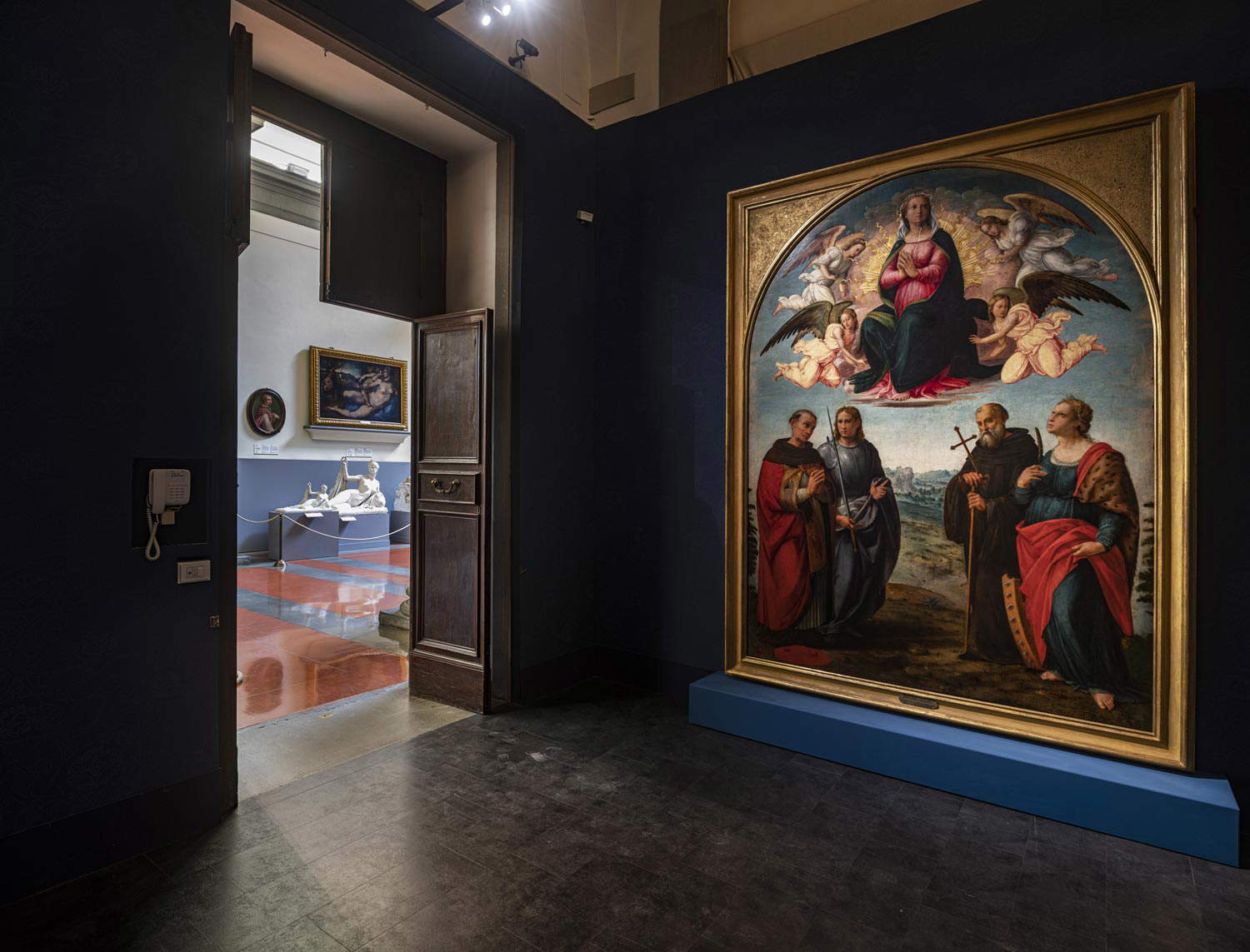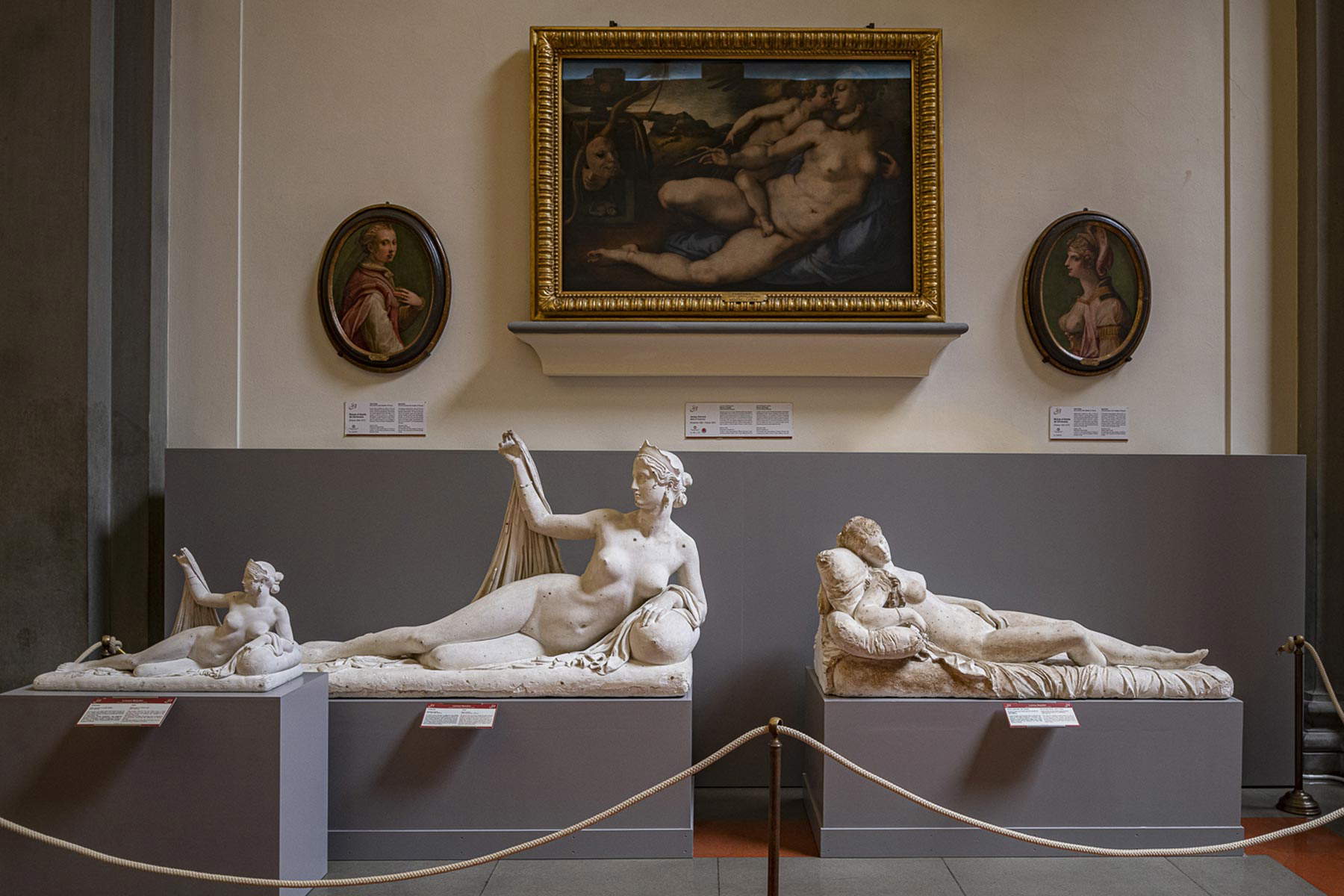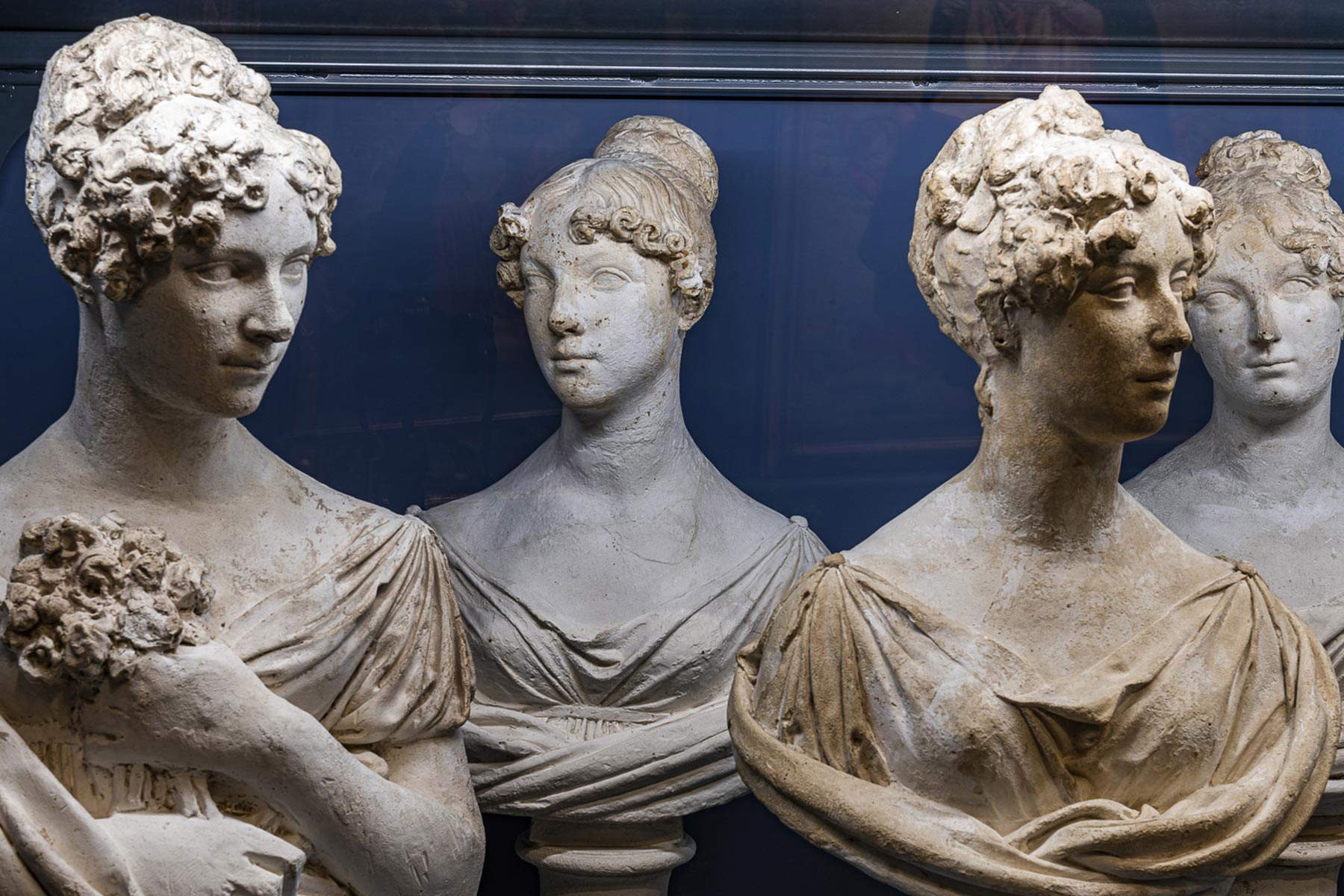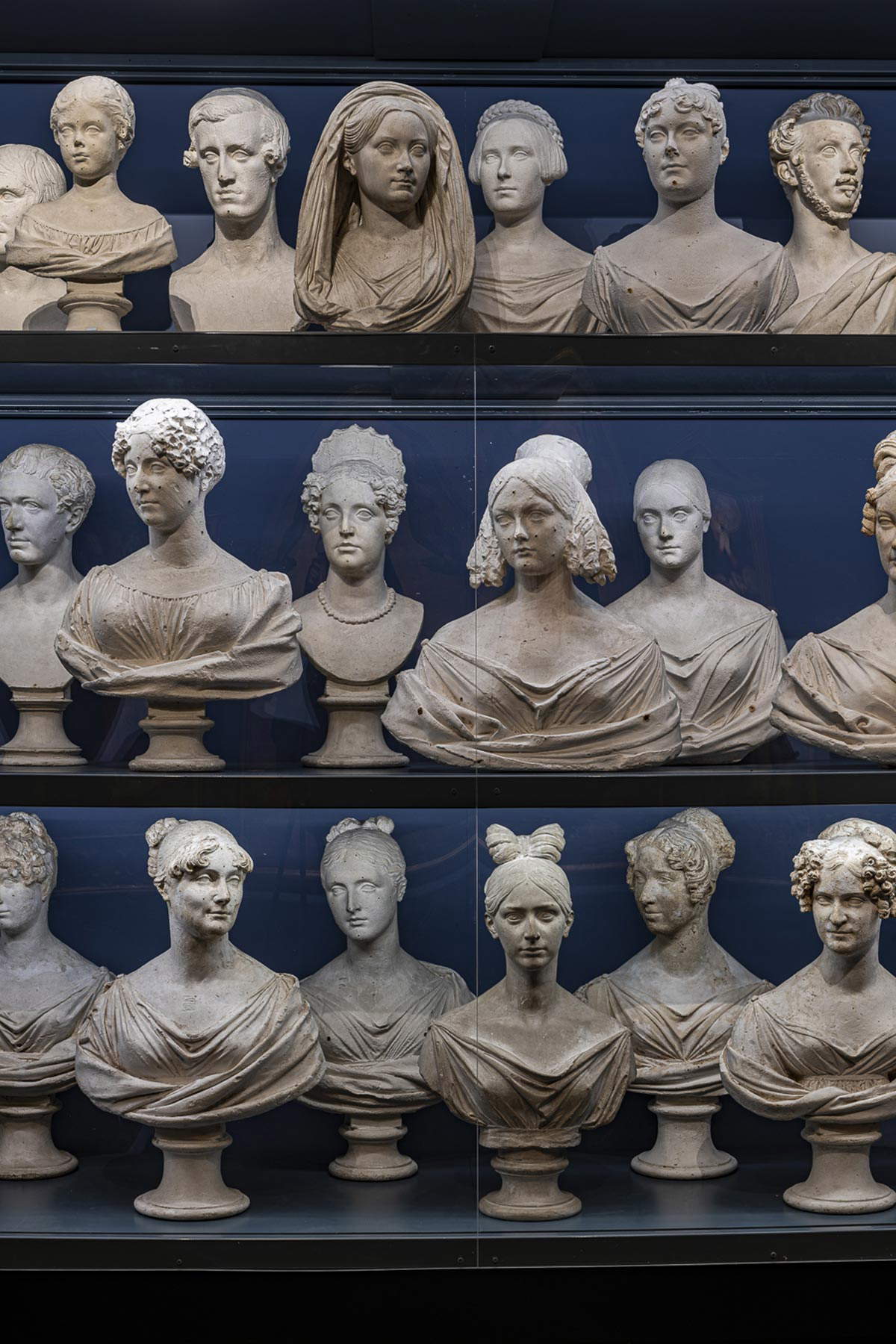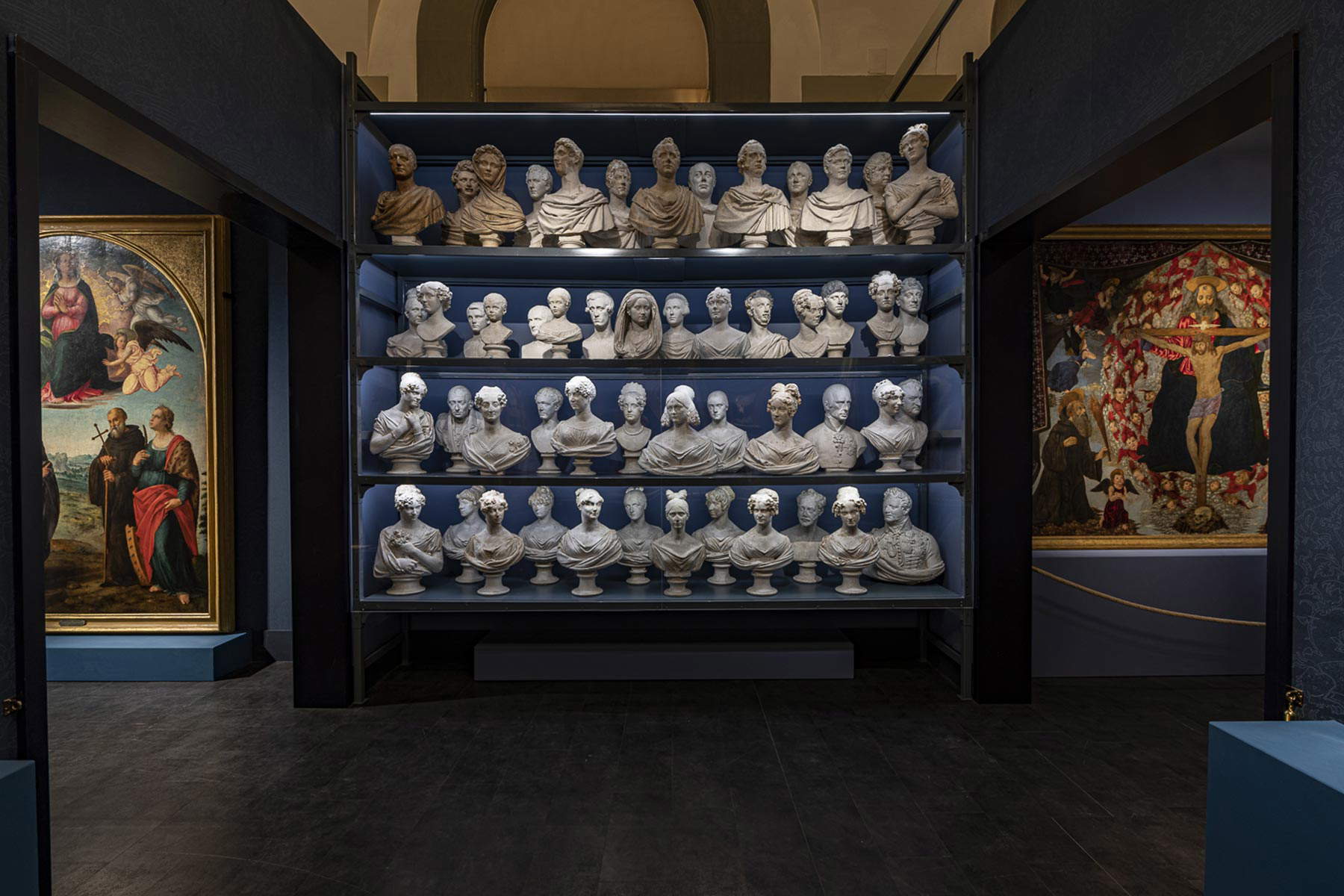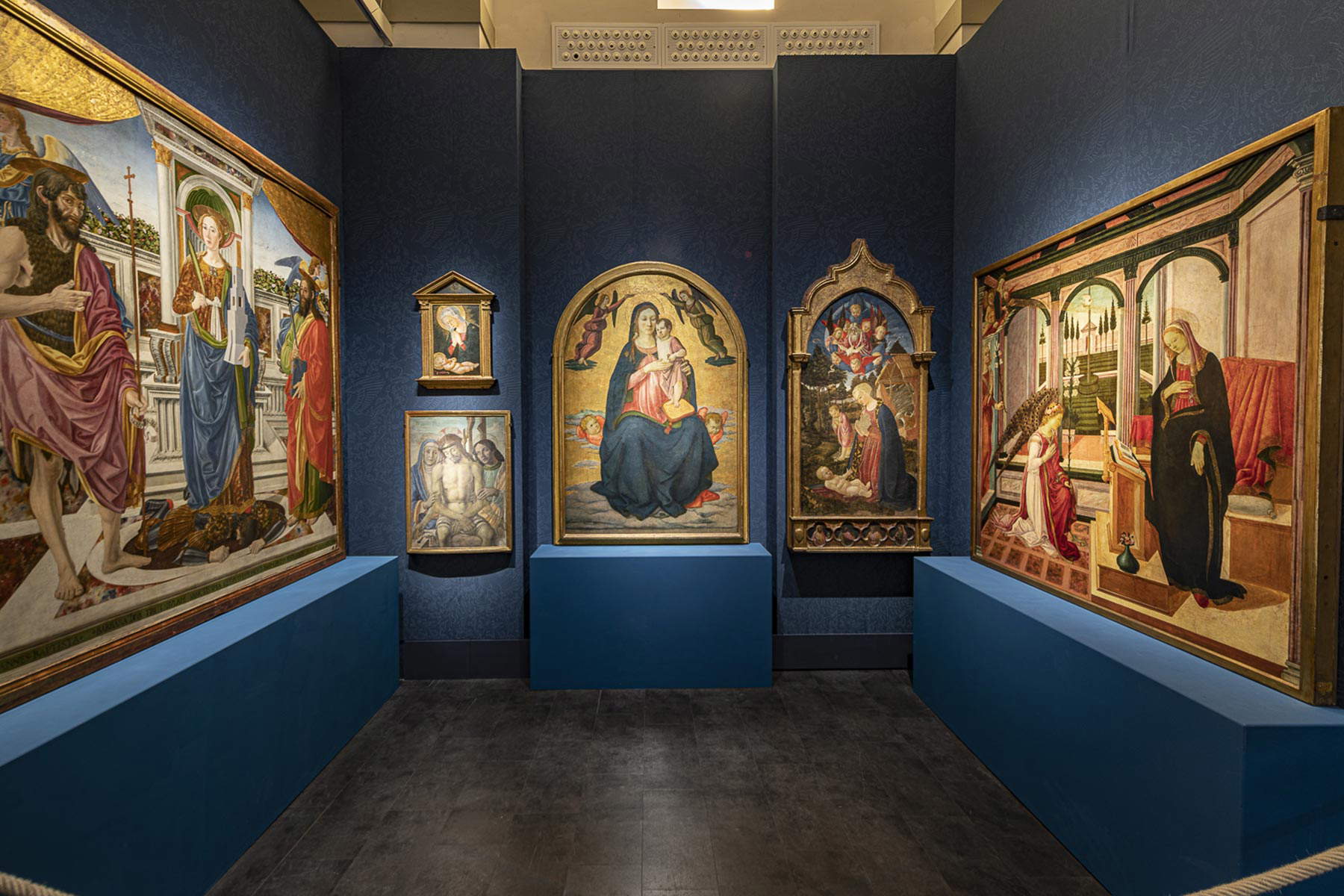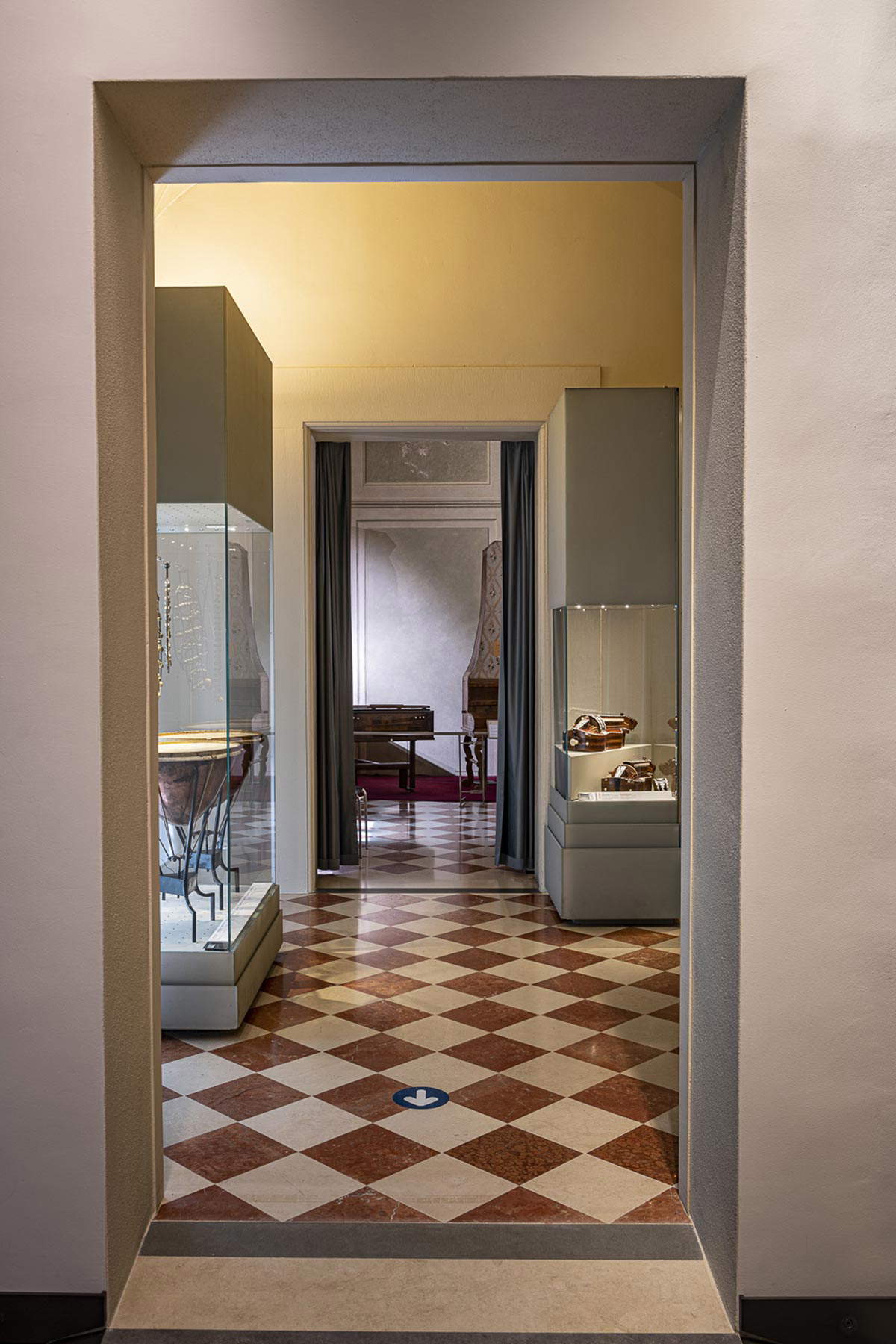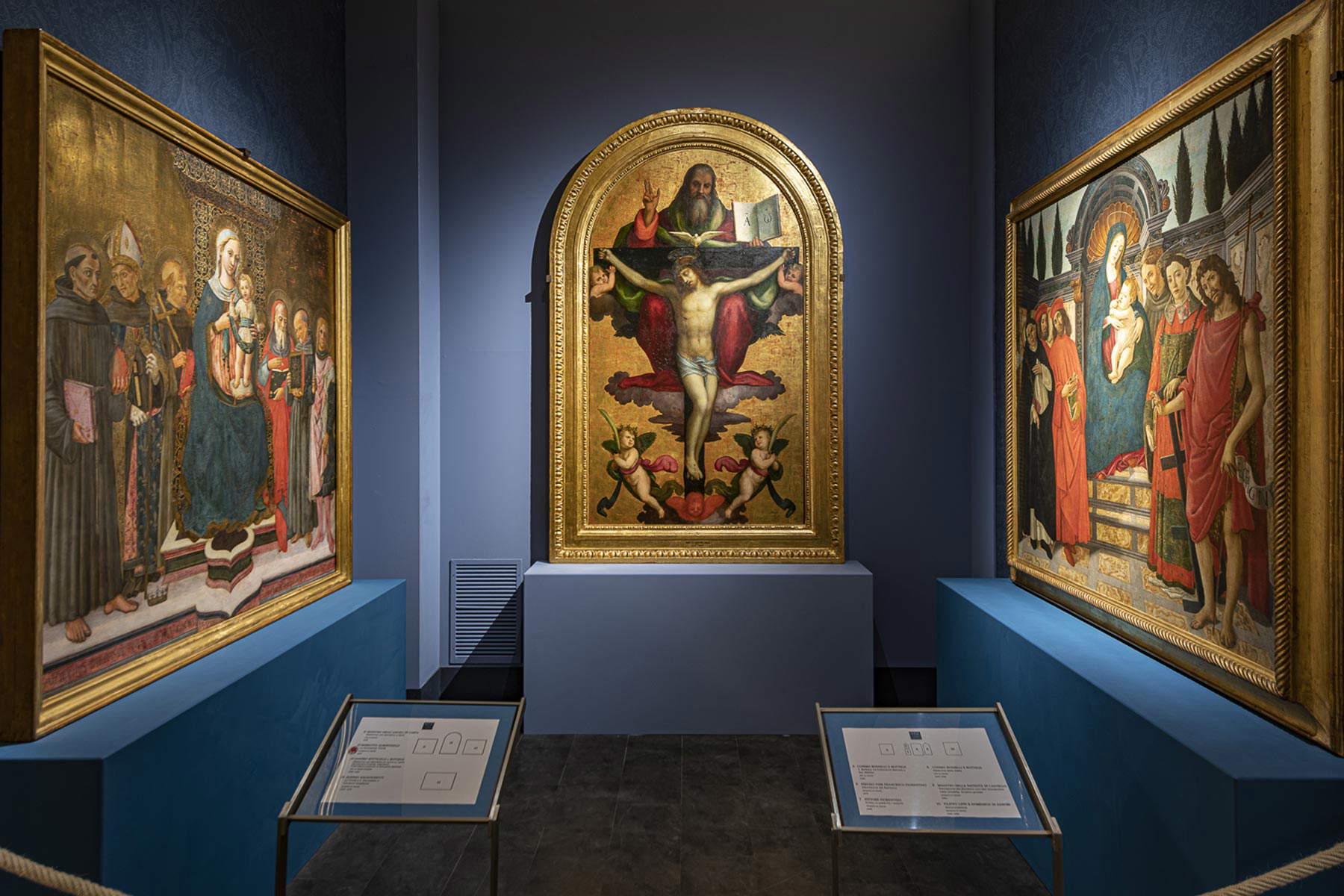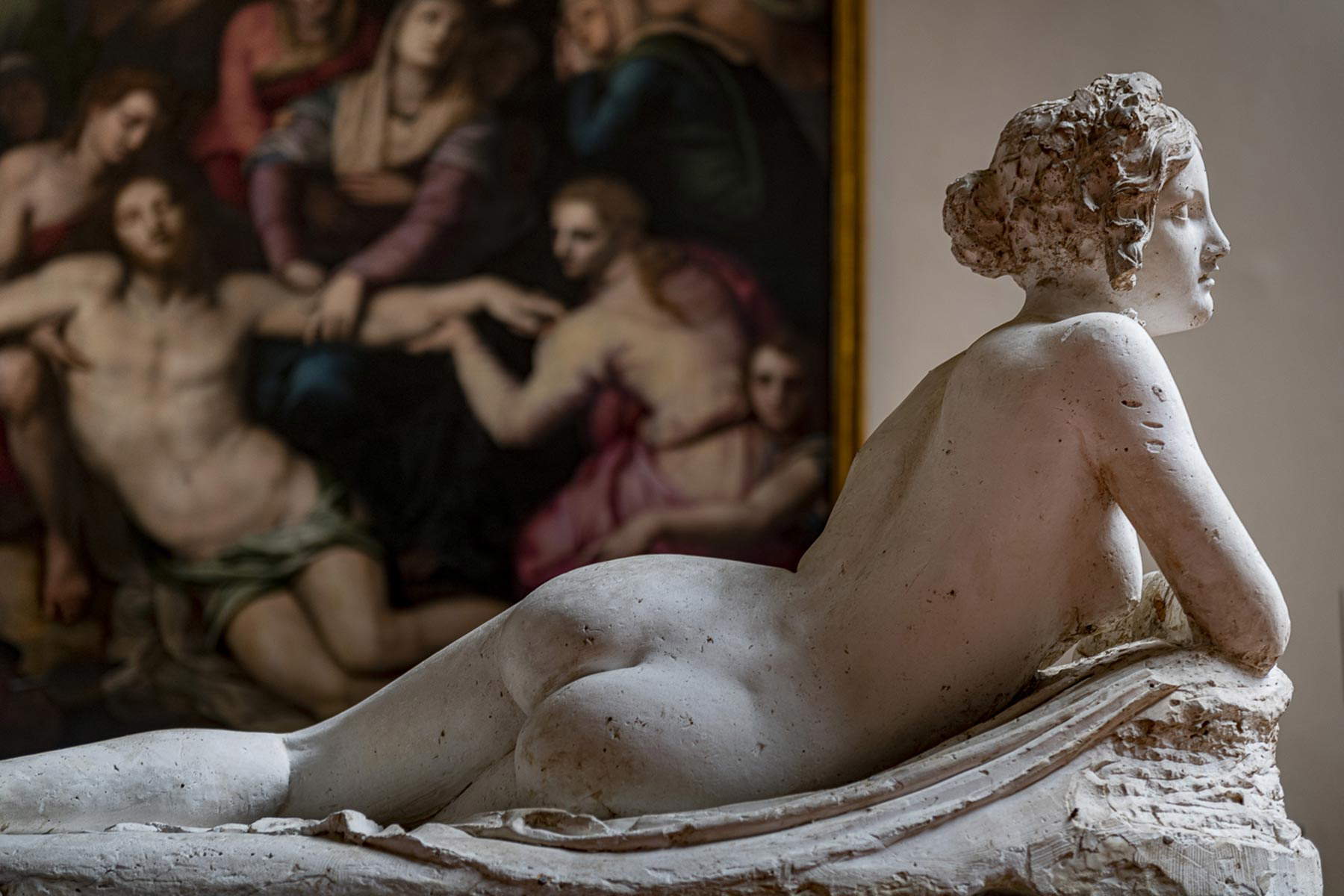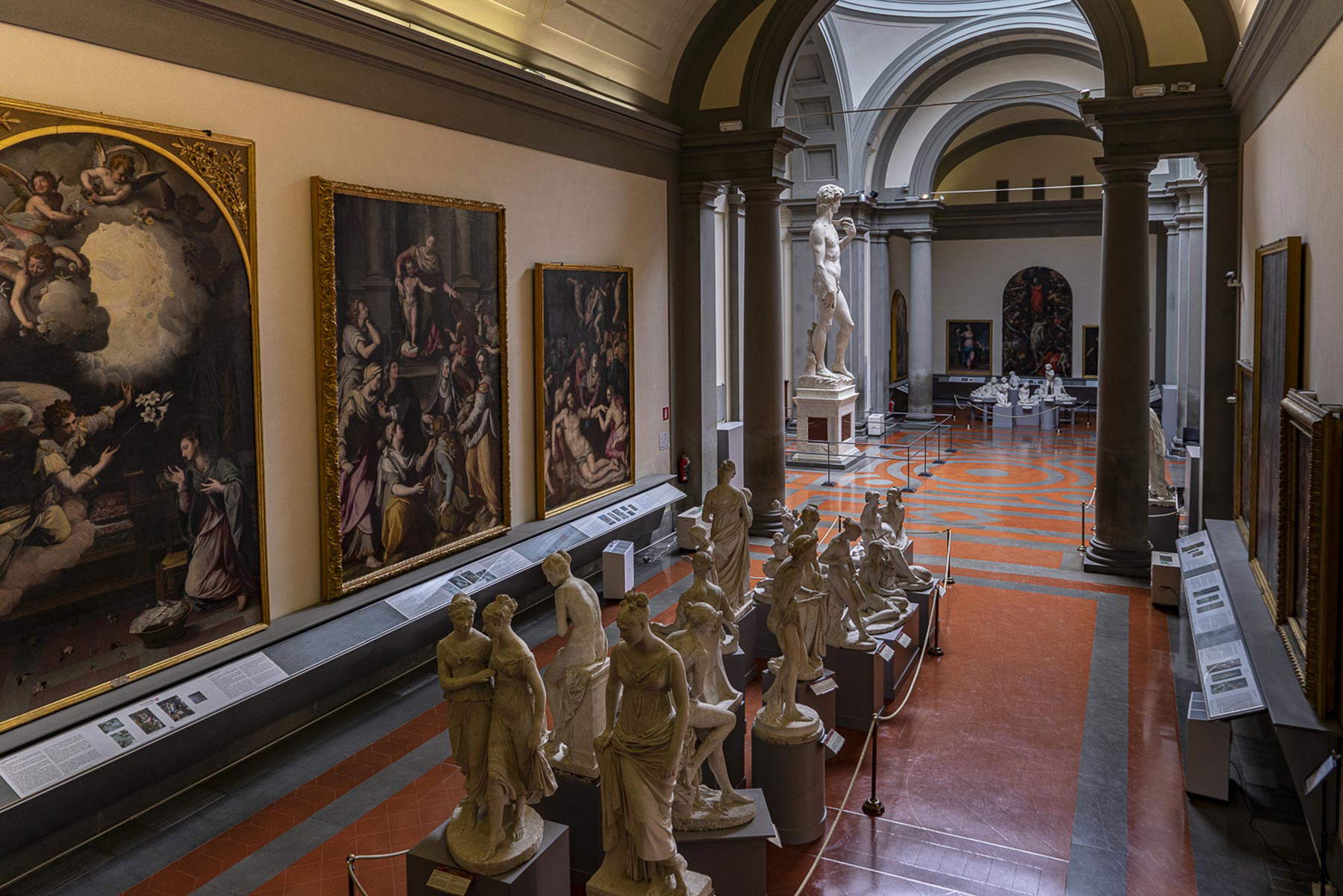by Redazione , published on 05/05/2021
Categories: Museums
/ Disclaimer
The Accademia Gallery in Florence reopens tomorrow, May 6, with completely revolutionized layouts: the Bartolini plaster casts are now next to Michelangelo's David, and the paintings in the Hall of Colossus end up in the former Florentine rooms.
As of tomorrow, Thursday, May 6, 2021, the Accademia Gallery in Florence reopens with a revamped layout: during the long closure due to lockdown, in fact, the museum has been engaged in major renovation works that have required the movement of more than 600 works, revolutionizing the exhibition itinerary and giving rise to a new layout. This arrangement is temporary and will last until the work affecting both the Gypsoteca and the Colossus Room, as well as the Byzantine and second floor rooms, is finished. From June onward there will also be further openings and continuous changes, while in July the major work on the planting involving the entire museum will be finished and there will finally be a new air conditioning system working in every room.
The “highlight” of the new layout is certainly the new arrangement of the David Tribune: the long path leading to Michelangelo’s masterpiece is in fact accompanied, after the usual Prisoners, by a crowd of characters, namely the plaster casts by Lorenzo Bartolini that, due to the works in the Gipsoteca, have been temporarily transferred to the Tribuna. The Gipsoteca, which ideally recreates the studio of Lorenzo Bartolini, one of the most important Italian sculptors at the turn of the eighteenth and nineteenth centuries, housed some 450 works including portrait busts, bas-reliefs, and sculptures of various sizes, all works shaped by the artist, along with some examples by his pupil Luigi Pampaloni. All of these busts and some of the sculptures depicting personages, noblemen and noblewomen, intellectuals and musicians of the era, as well as nymphs and mythological figures, which are usually not very visible because they are placed on high shelves, are now found chorally repopulating the new itinerary. They have been grouped by subject area to give the public, the museum explains, a glimpse of the fashion of the era, from hairstyles to clothing.
Among the new features is the opening of the section dedicated to Musical Instruments. The visit to the museum will begin precisely in the Musical Instruments department: opened in 2001, it houses the collection of the Luigi Cherubini Conservatory of Florence with about fifty musical instruments from the private collections of the grand dukes of Tuscany, the Medici and the Lorraine, collected between the second half of the 17th century and the first half of the 19th. They stand out, the tenor viola and cello by Antonio Stradivari, both part of the quintet made in 1690 for Grand Prince Ferdinando de Medici, a Stradivari violin from 1716, a Nicolò Amati cello from 1650, an oval spinet and an ebony harpsichord, both made by Bartolomeo Cristofori. The collection also preserves paintings by authors such as Anton Domenico Gabbiani and Bartolomeo Bimbi, who depicted musical life at the court in those same years.
Again, another novelty: the Musical Instruments section is now directly connected, via a new passageway, to the ex-Fiorentine, the temporary exhibition rooms, where paintings arriving from the Sala del Colosso, currently closed for works, have been arranged. Thus, masterpieces such as Paolo Uccello’s Thebaid, the so-called Cassone Adimari by Scheggia, Masaccio’s brother as well as a specialist in the decoration of household furnishings and birthing desks, and then again Sandro Botticelli’s Pala del Trebbio, so named after the Medici Castle from which it comes, and works by Domenico Ghirlandaio, Lorenzo di Credi, Jacopo del Sellaio, Filippino Lippi and Mariotto Albertinelli, are arriving in the rooms.
“It was a dare I say cyclopean undertaking, relocating all these works,” says Cecilie Hollberg, director of the Accademia Gallery in Florence. “The work we systematically undertook to solve the building’s many conservation problems presented us with a great challenge: to rethink the museum’s exhibition layout, while respecting its collections. I am very happy with the result, which I think is very appealing, and to be able to share it with our public.”
 |
| The new layouts of the Accademia Gallery. Ph. Credit Guido Cozzi |
 |
| The new installations of the Accademia Gallery. Ph. Credit Guido Cozzi |
 |
| The new installations of the Accademia Gallery. Ph. Credit Guido Cozzi |
 |
| The new installations of the Accademia Gallery. Ph. Credit Guido Cozzi |
 |
| The new installations of the Accademia Gallery. Ph. Credit Guido Cozzi |
 |
| The new installations of the Accademia Gallery. Ph. Credit Guido Cozzi |
 |
| The new installations of the Accademia Gallery. Ph. Credit Guido Cozzi |
 |
| The new installations of the Accademia Gallery. Ph. Credit Guido Cozzi |
 |
| The new installations of the Accademia Gallery. Ph. Credit Guido Cozzi |
 |
| The new installations of the Accademia Gallery. Ph. Credit Guido Cozzi |
 |
| The new installations of the Accademia Gallery. Ph. Credit Guido Cozzi |
 |
| Florence, Accademia Gallery reopens with revolutionized layouts: plaster casts near the David |
Warning: the translation into English of the original Italian article was created using automatic tools.
We undertake to review all articles, but we do not guarantee the total absence of inaccuracies in the translation due to the program. You can
find the original by clicking on the ITA button. If you find any mistake,please contact us.

